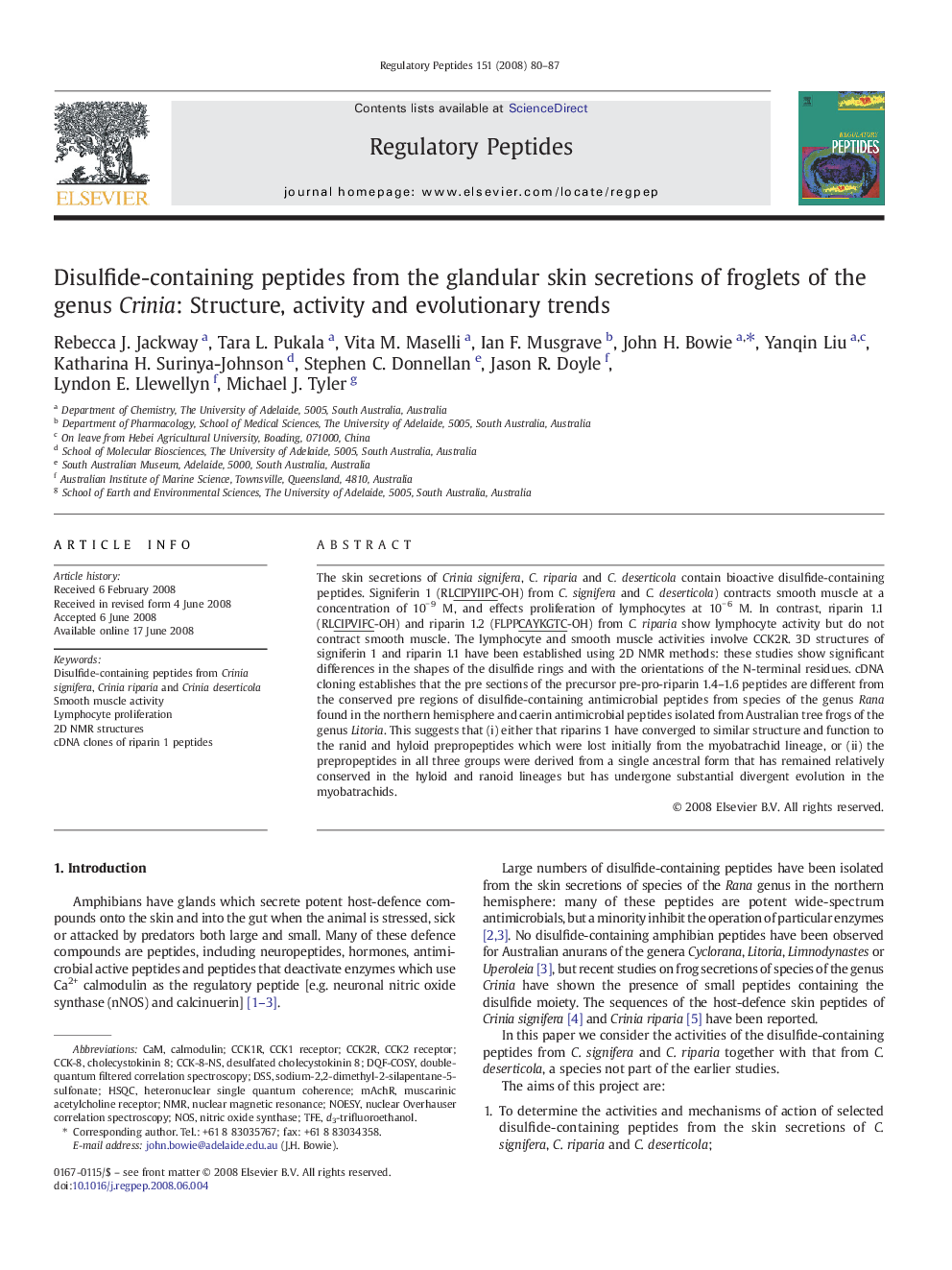| Article ID | Journal | Published Year | Pages | File Type |
|---|---|---|---|---|
| 2023026 | Regulatory Peptides | 2008 | 8 Pages |
The skin secretions of Crinia signifera, C. riparia and C. deserticola contain bioactive disulfide-containing peptides. Signiferin 1 (RLCIPYIIPC-OH) from C. signifera and C. deserticola) contracts smooth muscle at a concentration of 10− 9 M, and effects proliferation of lymphocytes at 10− 6 M. In contrast, riparin 1.1 (RLCIPVIFC-OH) and riparin 1.2 (FLPPCAYKGTC-OH) from C. riparia show lymphocyte activity but do not contract smooth muscle. The lymphocyte and smooth muscle activities involve CCK2R. 3D structures of signiferin 1 and riparin 1.1 have been established using 2D NMR methods: these studies show significant differences in the shapes of the disulfide rings and with the orientations of the N-terminal residues. cDNA cloning establishes that the pre sections of the precursor pre-pro-riparin 1.4–1.6 peptides are different from the conserved pre regions of disulfide-containing antimicrobial peptides from species of the genus Rana found in the northern hemisphere and caerin antimicrobial peptides isolated from Australian tree frogs of the genus Litoria. This suggests that (i) either that riparins 1 have converged to similar structure and function to the ranid and hyloid prepropeptides which were lost initially from the myobatrachid lineage, or (ii) the prepropeptides in all three groups were derived from a single ancestral form that has remained relatively conserved in the hyloid and ranoid lineages but has undergone substantial divergent evolution in the myobatrachids.
